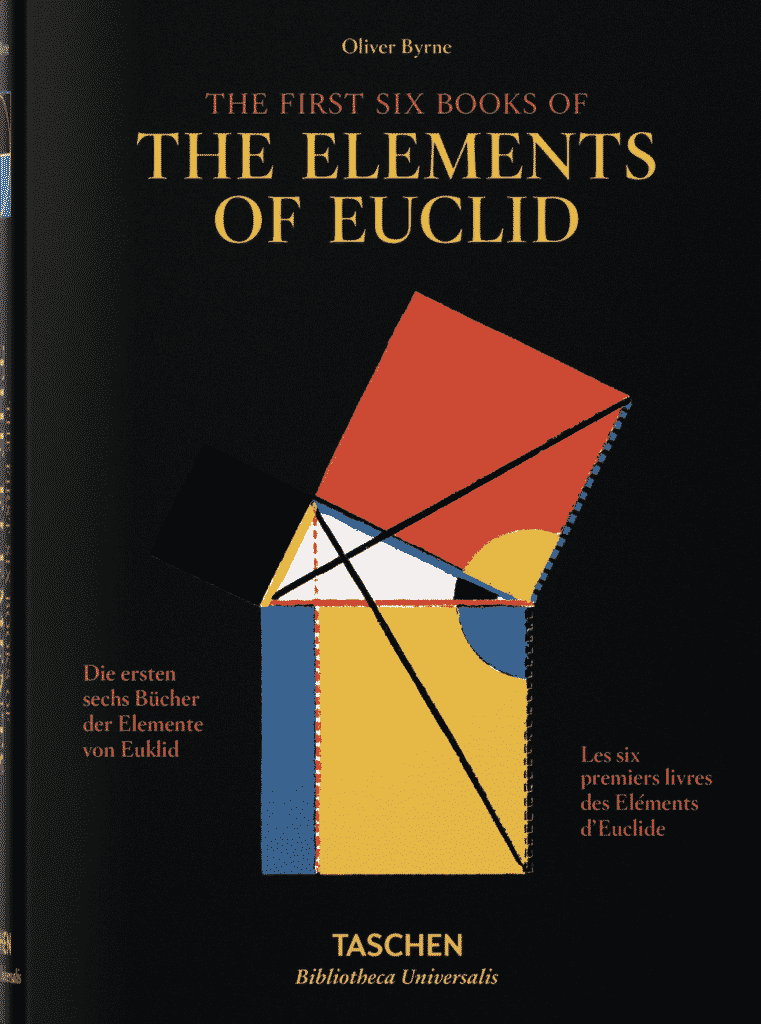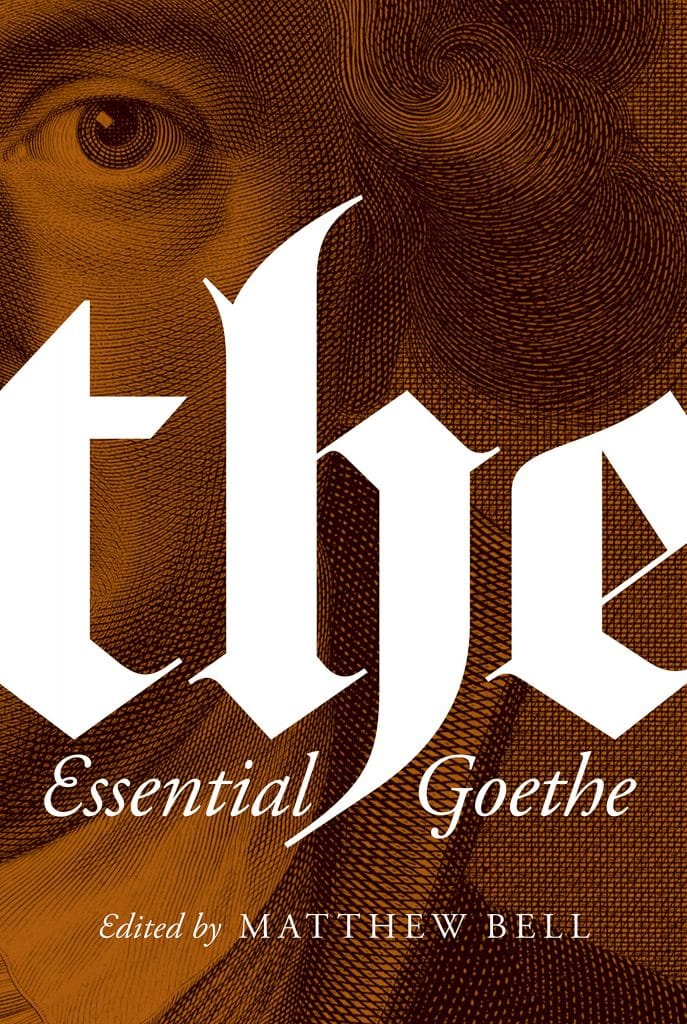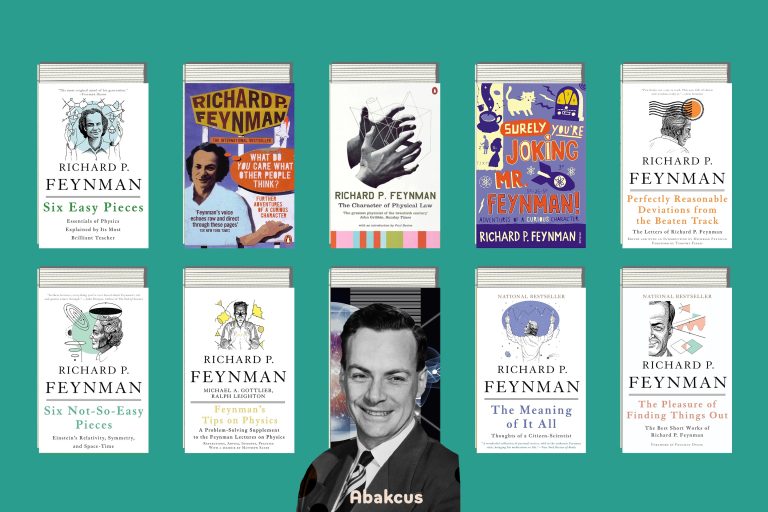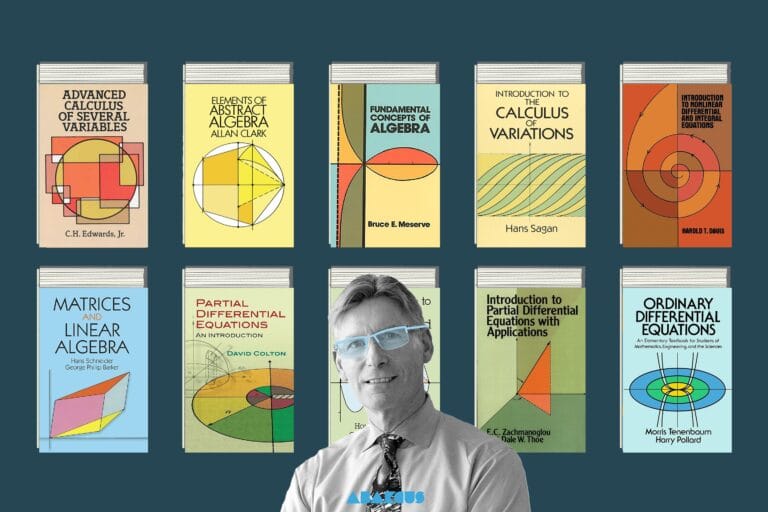There is a famous Einstein quote on the internet: “The only thing you absolutely have to know is the library’s location.” I am not sure if Albert Einstein said those words, but that quote makes sense. Everyone should know the library in their neighborhood!
Einstein was a genius. He was gifted, but there was also another reason why he was so smart; reading a lot of books. He loved getting a book from his large library and reading for hours.
In Walter Isaacson’s biography of Albert Einstein, we learned that Einstein preferred mostly philosophical and scientific books, and some books influenced thinking, which was very normal.
What were Einstein’s favorite books?
But what are those books which affected Einsteins’ thinking more? I did some search for you and listed seven of Einstein’s favorite books for you below!
*** If you like Albert Einstein, you should also check “The Collected Papers of Albert Einstein: 15 Beautiful Physics Books.”
In Spinoza’s thought-provoking book, Ethics, he challenges our beliefs about God’s love and emotions. According to him, God is impartial and cannot be influenced by our feelings. However, he firmly believes in the existence of God as the ultimate source of everything.
Spinoza’s Ethics teaches us the importance of self-preservation through moderation and reason. He identifies anger, envy, sadness, and hatred as the only true evils in the world. But fear not, for love, peace, and kindness can overcome them. Spinoza emphasizes that true power lies in understanding, particularly understanding God, and that joy is the ultimate form of satisfaction.
While Spinoza’s Ethics may be challenging to follow with its use of mathematical proofs, it is not without its merits. Spinoza’s deductive approach allows for pinpointing the essence of things, even if it may not be adaptable in proving ethical principles. Interestingly, his critique of religious texts in the Theological-Political Treatise employs a simpler method of reasoning.
Delve into Spinoza’s world of ethics and discover a new way of thinking about God, human emotions, and the power of understanding.
Mathematics is a fascinating subject that has created a world of inspiration and innovation throughout human history. Yet, to understand the complex world of mathematics, one needs to understand the core principles that govern the subject. In this regard, the legendary book, “The First Six Books of the Elements of Euclid,” is one of the most important works ever written in the field of Mathematics.
The book was written in 300 BC, a time when there were no textbooks to learn and understand mathematics. Euclid, the great Greek mathematician, created this masterpiece, which outlined the fundamental principles of mathematics. The book’s influence is apparent in the works of great mathematicians throughout history, including Newton, Descartes, and Einstein. The Elements of Euclid lays the foundation for modern math, and to understand the subject, you must start with this book.
Oliver Byrne was a civil engineer! However, today we know him because of his ‘colored’ book of Euclid’s Elements. He loved Euclid’s Elements and decided to make his own version in the mid-19th century, and his version of Euclids’ Elements considered a masterpiece of Victorian printing. And many thanks to Taschen, we can access Oliver Byrne’s version of Euclid’s Elements!
Oliver Byrne – The First Six Books of the Elements of Euclid from TASCHEN is a classic math book for several reasons. Firstly, the book is beautifully designed and it is full of colorful diagrams and illustrations, and each is color-coded to represent different parts of each geometric shape. This makes it easier for readers to understand and visualize complex geometric concepts.
Euclid’s Elements was created to teach logical reasoning skills. Mathematical reasoning encompasses the systematic steps taken to arrive at logical conclusions. The book teaches how to establish connections between basic or self-evident assumptions and, from these connections, to prove or derive everything else within the subject. Reading the book helps to develop logical reasoning patterns that can be applied in different aspects of life.
For mathematics to be effective, it must be communicated accurately and clearly. The book speaks to an unversed individual in math, teaching various concepts step by step with clear writing and concise definitions. This clarity allows for an easy understanding of mathematical concepts, enabling the ability to apply those concepts in different fields.
The Elements of Euclid’s main mathematical concept is plane geometry, which studies point, lines, angles, and corresponding geometric figures. The book teaches how to observe geometric shapes, relationships, and connections carefully. The students become consciously aware of the shapes, sizes, and distances of geometric shapes, enabling them to use geometric principles to solve various mathematical issues. Understanding these concepts develops a geometric mindset, which can be useful in architecture, engineering, science, and technology.
To summarize, Oliver Byrne – The First Six Books of the Elements of Euclid from TASCHEN is more than a math book; it’s a piece of art. The visually appealing layouts, fascinating colors, and sketch drawings provide an artistic approach to math. It is a book that you can appreciate for its beauty as well as its educational value. And having a copy of the book is like owning a piece of history. The book is considered to be extremely rare, so being one of the few people to own a copy is something special. There’s something magical about having an artifact that represents mathematical history and knowledge.
Analysis of Sensations
Mach established an early version of scientific positivism by insisting that sensation serves as the data for all physical and psychological science. As such, it gave Külpe and Titchener an epistemological framework for their developing ideas. Mach also contributed to the foundation for the Gestaltists’ eventual acceptance of the phenomenal status of extension and duration by viewing space and time as the immediate data of experience rather than as Kantian categories.
Step back in time and dive into the captivating world of numbers with this classic book, Number: The Language of Science. Although it was written decades ago, its relevance remains intact, making it a must-read for anyone interested in the fascinating evolution of numbers and their impact on mathematics, philosophy, and science.
Unlike other math-focused books, this gem takes a storytelling approach, making it accessible to a wider audience. While some mathematical proofs are explored, the author skillfully explains them in a way that even non-mathematicians can appreciate. A basic understanding of math could certainly enhance the experience, but it’s not a prerequisite.
Don’t let its age deter you. While the chapter on “Future problems” may no longer hold relevance, it offers an intriguing glimpse into historical math problems and their subsequent solutions. And for those hungry for more, the editors have included additional book recommendations, sure to keep us engaged in further exploration.
Discover the wonders of number theory and embark on a journey that will leave you with a newfound appreciation for the language of science. Number: The Language of Science is the perfect starting point for anyone delving into the realms of mathematics and beyond.
Don Quixote has spent so much time reading about knights and chivalry that he thinks he should be a knight errant himself. When he goes on these adventures with his loyal squire, Sancho Panza, they turn out in all kinds of wonderful ways. Unlike Don Quixote, who is often led astray by his fancy and thinks that the windmills he tilts at are giants, Sancho learns to be smart and clever. The wise fool and the sane madman travel the world together, and for almost 400 years, the combination of the two characters has made readers’ minds go crazy.
Miguel de Cervantes wrote the book Don Quixote, which is thought to be the first modern novel because of its experimental style and clever writing. John Rutherford did a masterful job translating the book for this Penguin Classics edition. This translation shows how lively and funny Cervantes’s writing is.
The Essential Goethe
The Essential Goethe is the most thorough and complete compilation of Goethe’s writings that has ever been made available in English. It makes it simpler than ever for users of the English language to access the most extensive body of work by one of the greatest authors in human history. There is a complete representation of Goethe’s work as a playwright, poet, writer, and autobiographer. The volume includes significant literary works that are infrequently published in English, such as the dramas Egmont, Iphigenia in Tauris, and Torquato Tasso, as well as the bildungsroman Wilhelm Meister’s Apprenticeship, a key work in the history of the novel, in addition to the works for which he is most well-known, such as Faust Part I and the lyric poems. A selection of Goethe’s essays on the humanities, philosophy, and sciences are also included in the book, providing readers with access to his unparalleled polymathic thinking. The translations, which are primarily taken from Princeton’s official twelve-volume Goethe edition, are very accessible and trustworthy contemporary versions produced by Goethe scholars. The volume’s editor, Matthew Bell, also thoroughly introduces Goethe’s life and writings.













